
Your MIGS Choice Matters
The first and only MIGS device to report significant safety and effectiveness outcomes from a pivotal trial at 5 years.1,2
Your MIGS Choice Matters
The first and only MIGS device to report significant safety and effectiveness outcomes from a pivotal trial at 5 years.1,2
Hydrus® Microstent:
Leading the Way For Evidence-Based Outcomes
The Hydrus® Microstent received the highest quality of clinical data rating given among all MIGS, in the 2020 AAO Primary Open-Angle Glaucoma Preferred Practice Pattern guidelines.3*
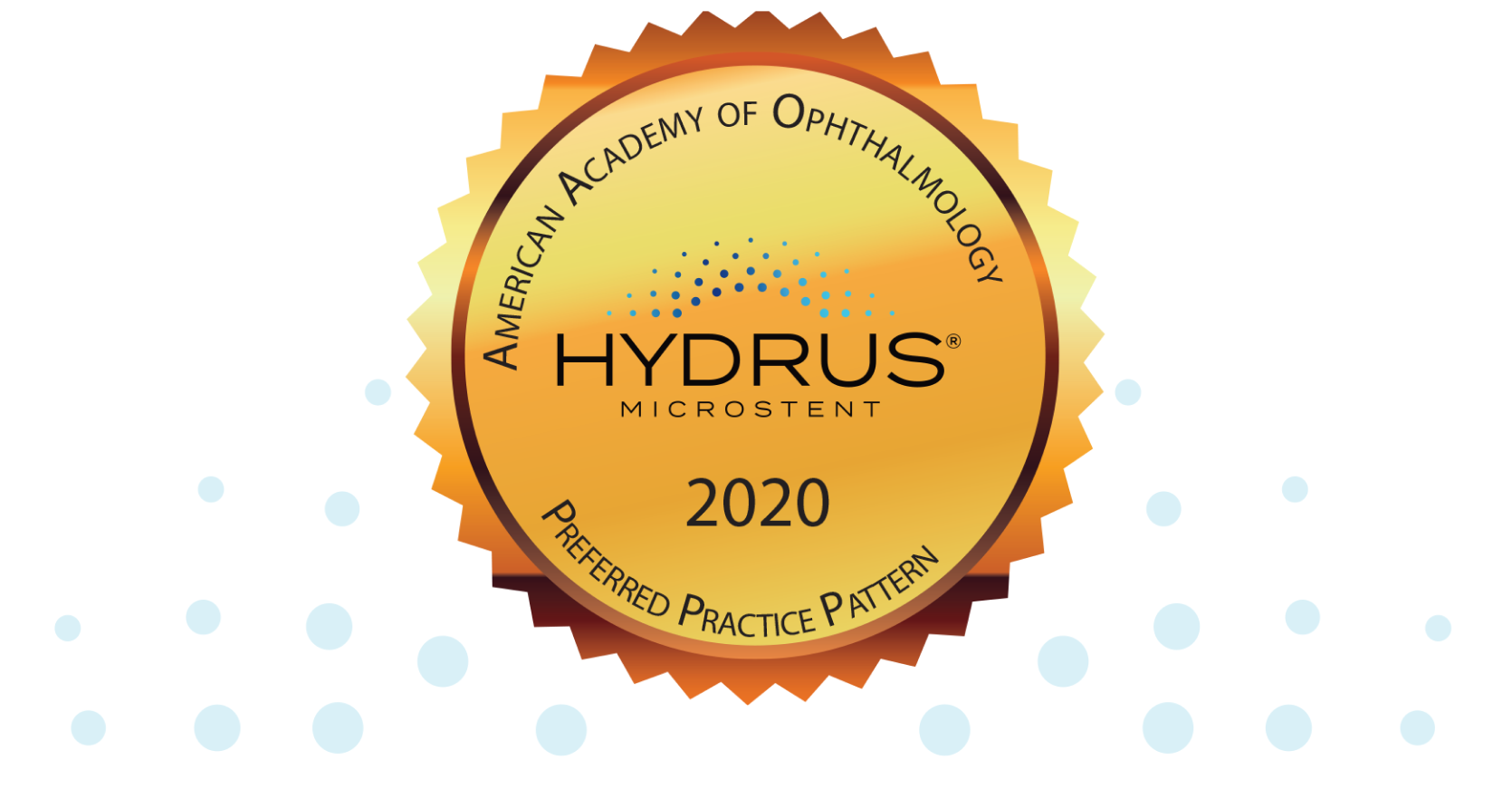
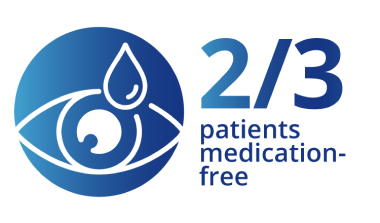
59% of Hydrus® Microstent patients remained medication-free at 5 years4†

Greater than 50% relative reduction in incisional SSIs‡ for Hydrus® Microstent patients compared to cataract surgery alone1
(2.4% in Hydrus® + CS vs. 5.3% in CS only)

Outstanding long-term safety at 60 months with SAE** rates comparable to cataract surgery alone1,2
Hydrus® Microstent provides confident and efficient microstent delivery
Hydrus® Microstent’s intuitive delivery system allows for a straightforward procedure with immediate visual confirmation of successful implantation.
*In the 2020 American Academy of Ophthalmology (AAO) Primary Open-Angle Glaucoma Preferred Practice Pattern guidelines, the Hydrus® Microstent received a data rating of “moderate quality, strong recommendation”; the highest rating given among all MIGS
†n=308 Hydrus® + CS
‡Secondary Surgical Intervention (SSI) includes trabeculectomy, tube shunt, gel stent, ECP/TSCP, non-penetrating; (9/369 Hydrus® and 10/187 CS)
**SAE= Serious Adverse Event; (13/369 (3.5%) in Hydrus® eyes vs. 8/187 (4.3%) in the control eyes)
An Innovative Design and a Unique Mechanism of Action
Roughly the size of an eyelash, the Hydrus® Microstent is a revolutionary canal-based MIGS device for adult patients with mild to moderate primary open-angle glaucoma.
The device is made of nitinol, which is highly flexible and biocompatible.5
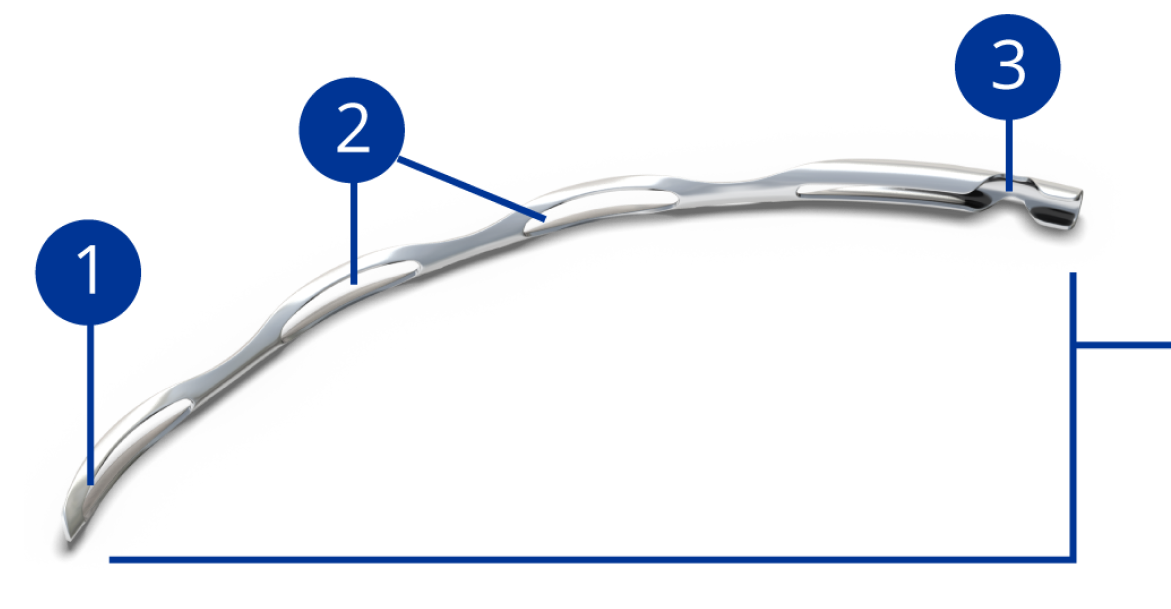
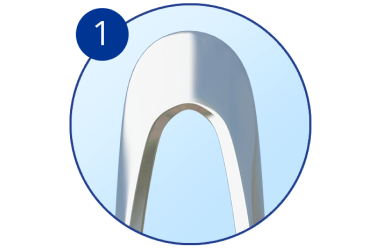

Rounded distal tip for a smooth passage into Schlemm’s canal
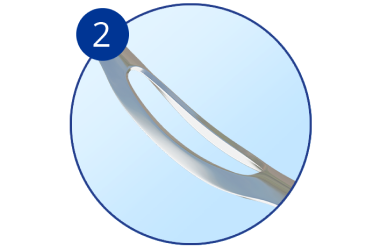

Open-window scaffold design provides outflow pathways for aqueous
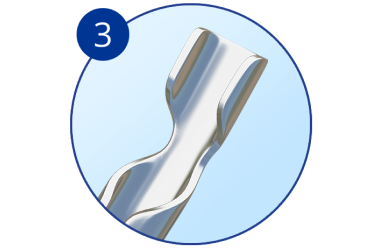

Aqueous inlet facilitates flow from anterior chamber to Schlemm’s canal
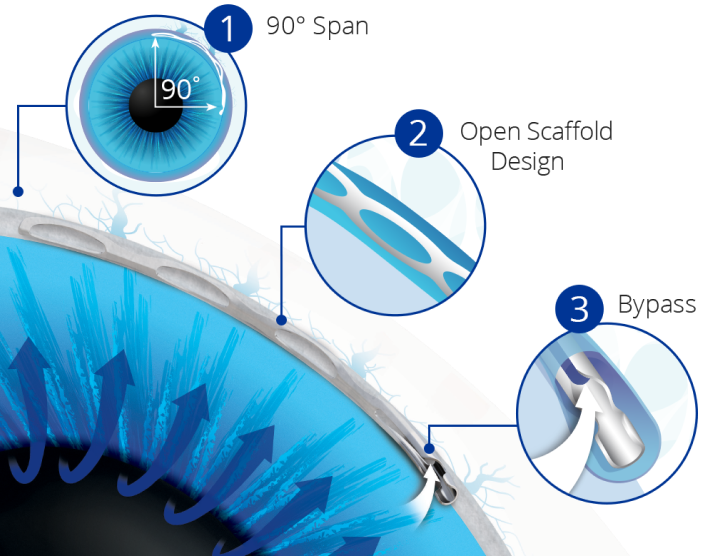
![]()
90° Span:
The only MIGS implant to span approximately 90° of Schlemm’s canal, ensuring access to collector channels in the nasal region.
![]()
Open Scaffold Design:
The first MIGS device to precisely dilate and scaffold Schlemm’s canal, gently expanding the cross sectional area without obstructing outflow access to collector channel ostia.5
![]()
Bypass:
The Hydrus® Microstent bypasses the trabecular meshwork to restore flow of aqueous from the anterior chamber through the inlet of the microstent into Schlemm’s canal.
Leading the Way For Evidence-Based Outcomes
The HORIZON Study
The largest prospective, randomised, controlled MIGS pivotal trial to date with 556 patients at 38 centers in 9 countries and five years of continuous follow up with 80% retention at year five.6-9
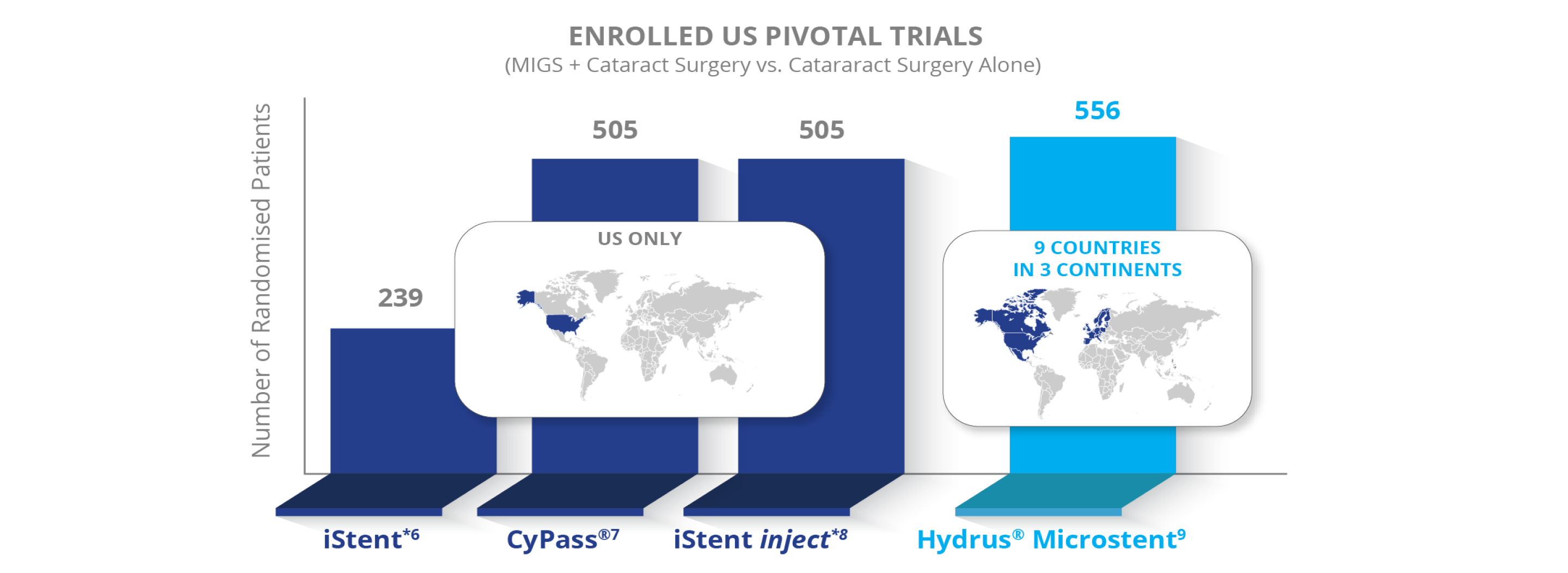
*Trademarks are the property of their respective owners.
Clinically proven to provide long-term IOP reduction10

Clinically proven to provide long-term medication reduction1,6-8*
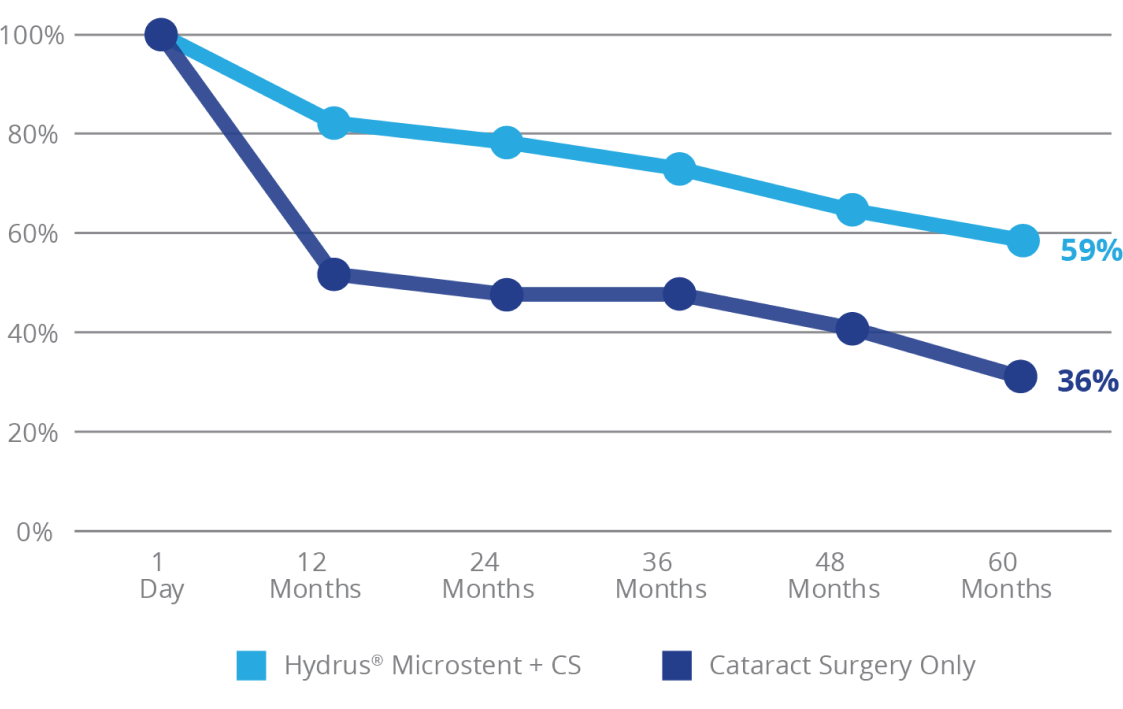

of Hydrus® Microstent patients on up to four preoperative medications remained medication-free at 5 years4
Among Hydrus® Microstent Patients on 1 Prior Medication

remained medication free at 2 years1

remained medication free at 5 years4
Through 5 years, incisional SSIs† were low in the Hydrus® group1

*5-year pivotal trial follow up included 308 patients in the Hydrus® group and 134 in the control
†Secondary Surgical Intervention (SSI) include trabeculectomy, tube shunt, gel stent, ECP/TSCP, non-penetrating; (9/369 Hydrus® and 10/187 CS)
Established long-term safety at 60-months with comparable SAE* rates reported vs cataract surgery alone1

*SAE= Serious Adverse Event; (13/369 (3.5%) in Hydrus® eyes vs. 8/187 (4.3%) in the control eyes)
The COMPARE Study
The first prospective, randomised, multicentre trial comparing Hydrus® Microstent vs 2 iStent* Trabecular Micro Bypass implants
more Hydrus® Microstent medication-free patients compared to patients with 2 iStent* implants.11
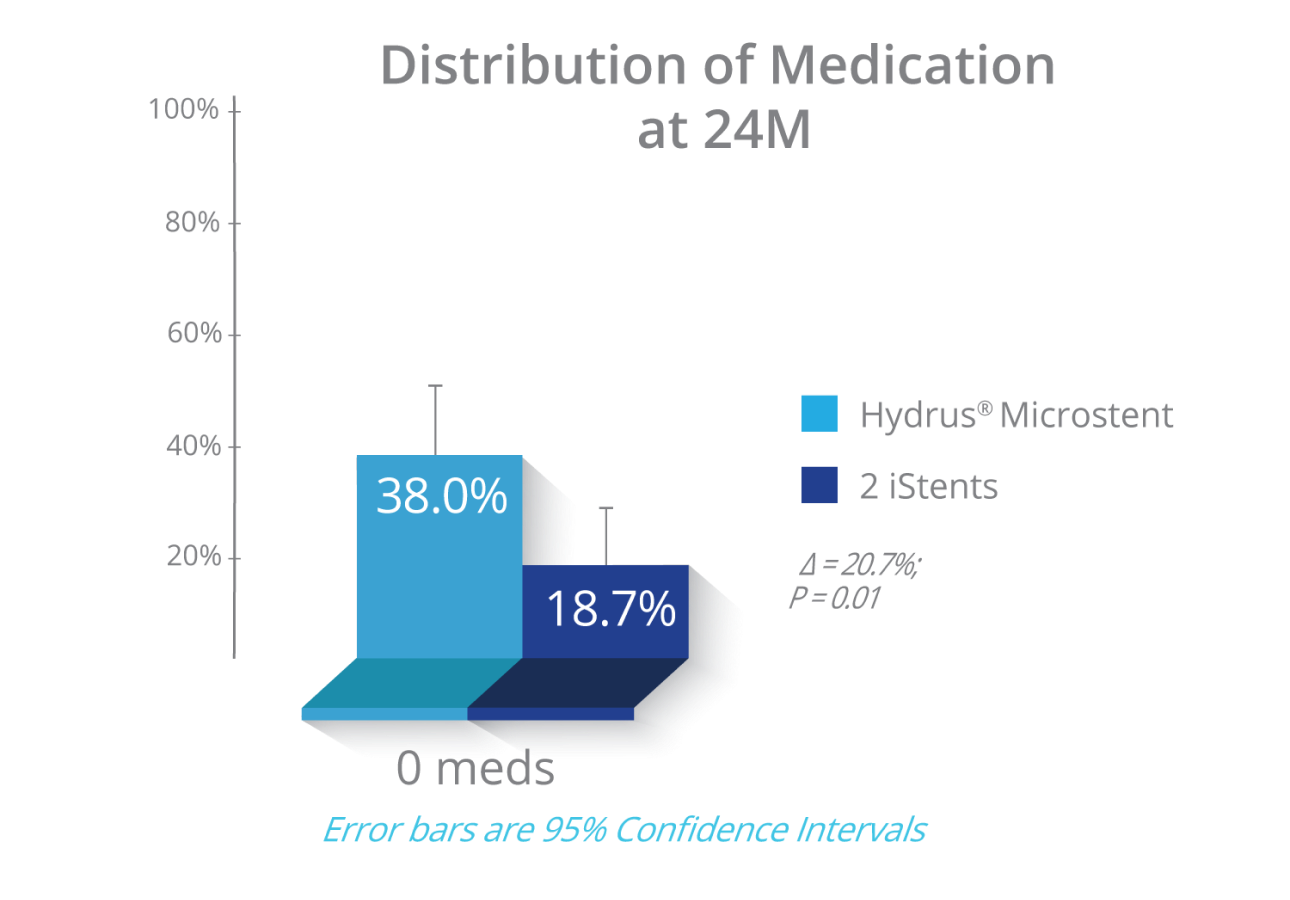

mean medication reduction at 2 years with Hydrus® Microstent, compared to a 30% reduction in the 2 iStent* group11
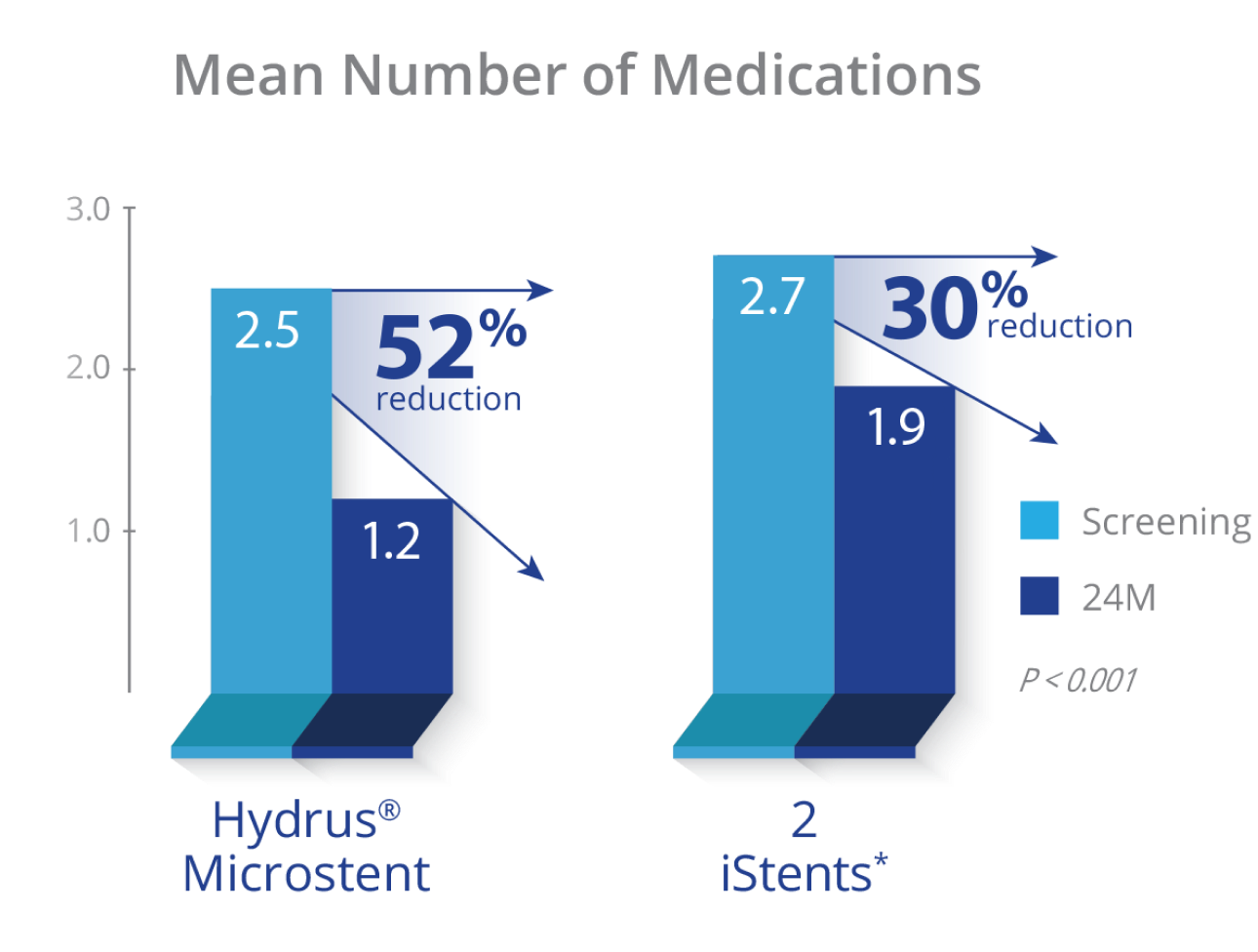
*Trademarks are the property of their respective owners.
Using Hydrus® Microstent in Your Practice
Discover Hydrus® Microstent
Dr. Ike Ahmed Performs Hydrus® Microstent Surgery
Hydrus® Microstent Clinical Studies
Instructions for Use (IFU)
For a full list of indications, contraindications and warnings, please visit ifu.alcon.com and refer to the relevant product’s instructions for use.
Alcon Experience Academy
For relevant training content from industry thought leaders
References:
1. Ahmed IIK, et al. Long-term outcomes from the HORIZON randomized trial for Schlemm’s Canal microstent in combination cataract and glaucoma surgery. Ophthalmology. 2022;129(7):742-751.
2. NIH. Safety & effectiveness study of the Hydrus Microstent for lowering IOP in glaucoma patients undergoing cataract surgery (HORIZON). ClinTrials.gov (NCT01539239).
3. Gedde SJ, et al. Primary open-angle glaucoma preferred practice pattern. Ophthalmology 2020;128(1): 71-150.
4. Alcon Data on File, 2024.
5. Hydrus Microstent Instructions for Use. 2020.
6. US Food and Drug Administration. Summary of Safety and Effectiveness Data (SSED): Glaukos iStent® Trabecular Micro-Bypass Stent. https://www.accessdata.fda.gov/cdrh_docs/pdf8/P080030B.pdf. Published June 25, 2012.
7. US Food and Drug Administration. Summary of Safety and Effectiveness Data (SSED): CyPass System. https://www.accessdata.fda.gov/cdrh_docs/pdf15/P150037B.pdf. Published July 29, 2016.
8. US Food and Drug Administration. Summary of Safety and Effectiveness Data (SSED): iStent inject Trabecular Micro-Bypass System. https://www.accessdata.fda.gov/cdrh_docs/pdf17/P170043b.pdf. Published June 21, 2018.
9. US Food and Drug Administration. Summary of Safety and Effectiveness Data (SSED): CyPass System. Hydrus Microstent. https://www.accessdata.fda.gov/cdrh_docs/pdf17/P170034B.pdf. Published August 10, 2018.
10. Samuelson TW, Chang DF, Marquis R, et al. A Schlemm canal microstent for intraocular pressure reduction in primary open-angle glaucoma and cataract: The HORIZON Study. Ophthalmology. 2019;126:29-37.
11. Alcon Data on File, 2018.
12. Otarola F, Virgili G, Shah A, et al. Ab interno trabecular bypass surgery with Schlemm ́s canal microstent (Hydrus) for open angle glaucoma. Cochrane Database of Systematic Reviews. 2020;3:CD012740.
Please refer to the relevant product direction for use for list of indications, contraindications and warnings.

